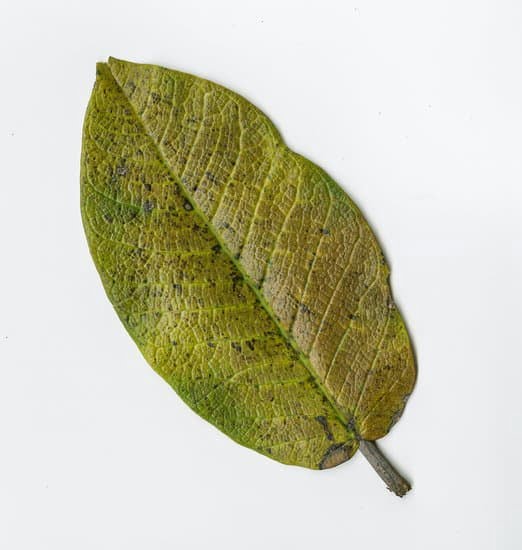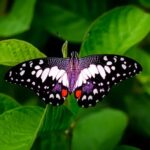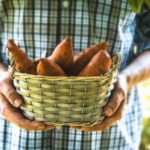Are you looking for creative landscaping ideas with bird feeders to enhance the beauty of your outdoor space? Bird feeders are not only a great way to attract and support local bird populations, but they can also add aesthetic value to your landscape.
In this article, we will explore the importance of incorporating bird feeders into your outdoor design, along with tips on choosing the right feeder, selecting bird-friendly plants, creating a bird-friendly habitat, and integrating feeders into your landscape.
Bird feeders play a crucial role in landscaping by providing food and shelter for birds throughout the year. They not only attract beautiful and diverse bird species to your yard but also create a natural and harmonious environment that adds charm to your outdoor space. Whether you are an avid bird watcher or simply love the sight and sounds of birds in your garden, using bird feeders in landscaping can be a delightful addition to your overall design.
In the following sections, we will provide valuable insights on how to choose the right feeder for your yard, where to place them, how to select bird-friendly plants, and practical tips for creating an inviting habitat for birds. Additionally, we will explore fun and creative DIY projects for making your own bird feeders while discussing how to seamlessly incorporate them into your landscape design.
So let’s dive into the world of landscaping with bird feeders and discover how these simple additions can transform your outdoor space into a vibrant haven for birds.
Choosing the Right Bird Feeder
When it comes to choosing the right bird feeder for your landscaping, there are a variety of types and styles to consider. Each type of bird feeder serves a different purpose and attracts different types of birds, so it’s important to choose the one that fits your needs and preferences. Here are some popular types of bird feeders:
- Hopper feeders: These feeders have a large reservoir that holds the bird seed and releases it as needed. They are versatile and can attract a wide variety of birds.
- Platform feeders: These flat feeders are ideal for attracting ground-feeding birds like doves, juncos, and sparrows. They can also accommodate larger birds like cardinals and blue jays.
- Tube feeders: These narrow, cylindrical feeders are perfect for small perching birds like finches, chickadees, and nuthatches. They often have multiple feeding ports to accommodate several birds at once.
- Suet feeders: Suet is a high-energy food made from animal fat that many bird species enjoy. Suet feeders typically consist of wire cages or mesh bags filled with suet cakes.
In terms of styles, bird feeders come in an array of designs and materials, from traditional wooden structures to modern metal or plastic ones. Consider the aesthetic you want to achieve in your landscaping when choosing the right style for your bird feeder.
When selecting a bird feeder for your landscaping, think about the types of birds you want to attract, as well as your personal style preferences. By choosing the right feeder type and style, you can create an inviting environment for local bird species while enhancing the beauty of your outdoor space with functional decor.
With careful selection and placement, you can turn your yard into a haven for feathered friends while adding charm to your landscape with beautiful feeding stations that complement your outdoor design aesthetic.
Location, Location, Location
When considering landscaping ideas with bird feeders, it’s crucial to think about the perfect location for placing them in your yard. The right placement of bird feeders can make a significant difference in attracting a variety of beautiful bird species to your outdoor space. Here are some important factors to consider when determining where to place your bird feeders:
Visibility and Accessibility
One of the most important considerations when deciding on the placement of bird feeders is visibility and accessibility. Ideally, you’ll want to place your feeders in an area where you can easily see them from inside your home, allowing you to enjoy watching the birds as they visit.
Additionally, consider accessibility for both yourself and the birds. Choose a spot that is easy for you to reach for refilling and cleaning, but also ensure that the birds have easy access without any obstructions.
Protection From Predators
Another crucial consideration is providing protection from predators. Avoid placing bird feeders too close to dense shrubs or bushes where predators like cats can hide and ambush visiting birds. Instead, opt for open areas where birds have clear visibility and can easily escape if a predator approaches.
Natural Shelter
While it’s important to provide open spaces for clear visibility, it’s also beneficial to place bird feeders near natural shelter such as trees or large bushes. These provide resting spots for birds before they approach the feeder and offer protection during adverse weather conditions.
By carefully selecting the location for your bird feeders based on these factors, you can create an inviting environment that will attract a diverse range of beautiful bird species to your yard. Keep in mind that choosing the right location plays a significant role in successful landscaping with bird feeders.
Planting for Birds
When it comes to landscaping ideas with bird feeders, selecting bird-friendly plants is crucial in creating a welcoming environment for our feathered friends. By choosing the right plants for your landscape, you can provide food, shelter, and nesting opportunities for a variety of bird species.
Native Plants
One of the best ways to attract birds to your yard is by planting native trees, shrubs, and flowers. Native plants provide the fruits, seeds, and nectar that many bird species rely on for sustenance. Consider incorporating species such as purple coneflower, black-eyed susan, and serviceberry into your landscape to attract a diverse array of birds.
Berries and Fruits
Birds are attracted to landscapes that offer a bounty of berries and fruits. Consider adding plants like viburnum, elderberry, and holly to provide nutritious snacks for birds throughout the year. These plants not only add beauty to your landscape but also serve as valuable food sources for our avian friends.
Shelter and Nesting Sites
In addition to providing food sources, it’s important to include plants that offer shelter and nesting sites for birds. Evergreen trees and dense shrubs such as juniper, cedar, and hawthorn provide excellent cover for birds seeking protection from predators or harsh weather conditions. Additionally, consider including plant species with dense foliage or thorny branches that can serve as safe nesting sites for birds.
By carefully selecting bird-friendly plants for your landscape, you can create an inviting habitat that supports the needs of local bird populations while enhancing the natural beauty of your outdoor space. Incorporating a variety of native plants, fruit-bearing species, and shelter-providing vegetation will not only attract more birds to your yard but also contribute to the overall health of your local ecosystem.
Creating a Bird-Friendly Habitat
If you’re looking to create a bird-friendly habitat in your yard, there are several things you can do to attract and support these beautiful creatures. Here are some landscaping ideas with bird feeders to help you get started:
- Provide a variety of feeders: Different species of birds have different feeding habits, so offering a variety of feeders can attract a wider range of birds. Consider including tube feeders, hopper feeders, suet feeders, and platform feeders in your yard.
- Plant native trees and shrubs: Native plants provide food and shelter for birds, making them an essential part of any bird-friendly landscape. Research the native plant species in your area and incorporate them into your yard to provide natural sources of food for the birds.
- Create water features: Birds need water not only for drinking but also for bathing. Adding a birdbath, pond, or fountain to your yard can attract birds while also adding visual interest to your landscape.
By implementing these landscaping ideas with bird feeders, you can create a welcoming environment for birds in your yard while also enjoying their beauty and song. With the right combination of bird feeders, plants, and water features, you can turn your outdoor space into a haven for feathered friends.
DIY Bird Feeder Projects
For those who enjoy hands-on projects and want to add a personal touch to their landscaping ideas with bird feeders, DIY bird feeder projects can be a fun and creative way to attract and support birds in your yard. Making your own bird feeders not only allows you to customize the design and size, but it also gives you the satisfaction of creating something that benefits the environment.
One simple DIY bird feeder project is creating a pinecone bird feeder. This project requires only a few materials such as pinecones, peanut butter, and birdseed. Simply spread peanut butter on the pinecone and then roll it in birdseed. Once completed, hang the pinecone from a tree or hook in your yard for birds to enjoy.
Another DIY bird feeder idea is using recycled materials such as plastic bottles or milk cartons. By cutting holes into these containers and adding perches for birds to rest on while they feed, you can easily create an affordable and environmentally-friendly bird feeder for your landscape.
Incorporating handmade bird feeders into your outdoor design not only adds charm and character to your yard but also provides a sustainable way to support local wildlife. Whether you choose to make a simple pinecone feeder or get creative with recycled materials, DIY bird feeder projects are a great way to enhance your landscaping ideas with bird feeders.
Landscaping With Bird Feeders
When it comes to landscaping ideas with bird feeders, incorporating feeders into your outdoor design can enhance the aesthetic appeal of your yard while also providing a welcoming space for local birds. There are several creative ways to seamlessly integrate bird feeders into your landscape, whether you have a sprawling garden or a small urban yard.
One popular option for incorporating bird feeders into your outdoor design is to place them within garden beds or near flowering plants. This not only provides easy access for birds to find food, but it also creates a visually appealing display of nature in your yard. Another idea is to hang multiple bird feeders at varying heights from tree branches or pergolas, adding dimension and interest to your outdoor space.
It’s important to consider the overall design and layout of your yard when incorporating bird feeders. For example, if you have a traditional or rustic style garden, opt for wooden bird feeders with simple designs that complement the existing aesthetic.
If you have a more modern outdoor space, look for sleek metal or glass feeders that will seamlessly blend in with the contemporary design. By carefully choosing the right bird feeder styles and placement, you can create an eye-catching landscape that attracts both human visitors and feathered friends alike.
| Types of Bird Feeders | Placement |
|---|---|
| Hopper Feeders | Garden Beds or Near Flowering Plants |
| Suet Feeders | Hang from Tree Branches or Pergolas |
| Tube Feeders | Varying Heights from Tree Branches |
Maintenance and Care
When it comes to landscaping ideas with bird feeders, incorporating these feeders into your outdoor design can have a significant impact on the overall aesthetic of your yard. There are several creative ways to seamlessly integrate bird feeders into your landscape, adding both visual interest and benefiting the local bird population.
One way to incorporate bird feeders into your landscaping is by strategically placing them near existing natural features, such as trees, shrubs, or garden beds. This not only provides a convenient and attractive location for the feeders but also allows birds to take cover in nearby foliage when they visit. Another idea is to use decorative hooks, posts, or stands to elevate your bird feeders off the ground and create an eye-catching focal point in your yard.
In addition to traditional hanging or pole-mounted bird feeders, you can also consider using stylish and functional bird baths that double as feeding stations. Offering birds a source of water in addition to food can further enhance your landscape’s appeal while providing essential resources for local wildlife.
| Landscaping Idea | Description |
|---|---|
| Natural Features Placement | Strategically place near trees, shrubs, or garden beds for both convenience and cover |
| Elevated Display | Use decorative hooks, posts, or stands to elevate bird feeders and create a focal point |
| Bird Baths as Feeding Stations | Consider using stylish bird baths that double as feeding stations for added visual appeal |
Conclusion
In conclusion, landscaping with bird feeders offers a multitude of benefits for both the birds and the homeowner. By incorporating bird feeders into your outdoor design, you can create a welcoming environment for local bird species while also adding visual interest to your landscape. Whether you choose to purchase or build your own bird feeders, there are endless opportunities to showcase your creativity and enhance the natural beauty of your yard.
Furthermore, maintaining a bird-friendly habitat can lead to a greater sense of connection with nature as you observe and appreciate the diverse bird species that visit your feeders. Additionally, by planting bird-friendly vegetation in your landscape, you can contribute to the conservation of native plants and increase biodiversity in your community. As a result, landscaping with bird feeders is not only enjoyable but also plays a vital role in supporting local ecosystems.
As you embark on your journey to create a bird-friendly landscape, remember that the possibilities are endless. With proper care and maintenance, along with thoughtful plant selections and strategic feeder placement, you can enjoy the sights and sounds of various avian visitors right in your own backyard. So why wait? Start exploring landscaping ideas with bird feeders today and reap the rewards of a vibrant and lively outdoor space.
Frequently Asked Questions
What Plants Are Good Around Bird Feeders?
Plants that are good around bird feeders are those that can attract birds while also providing them with shelter, food, or nesting sites. Some examples include sunflowers, coneflowers, black-eyed Susans, native grasses, and shrubs like serviceberry or elderberry.
What Do You Put Under Bird Feeders?
Under bird feeders, it’s a good idea to put something that makes it easier to clean up any fallen seeds or hulls. Many people use materials such as gravel, mulch, or even a layer of dead leaves to create a natural appearance while also making maintenance easier.
It’s important to avoid placing anything that could potentially harm the birds or introduce pests.
How Do You Decorate Around a Bird Feeder?
When decorating around a bird feeder, consider incorporating elements that are both functional and visually pleasing. This could involve adding decorative rocks or stones for texture and drainage, incorporating bird baths or small water features nearby, and placing seating areas where you can enjoy watching the birds.
Additionally, using bird-friendly plants and colorful flowers can create an attractive landscape around the feeder while also providing natural food sources for the birds.

Welcome to my gardening blog! I am passionate about plants and enjoy sharing my knowledge and experiences with others. In this blog, I will write about everything related to gardening, from tips on how to get started to updates on my own garden projects.





